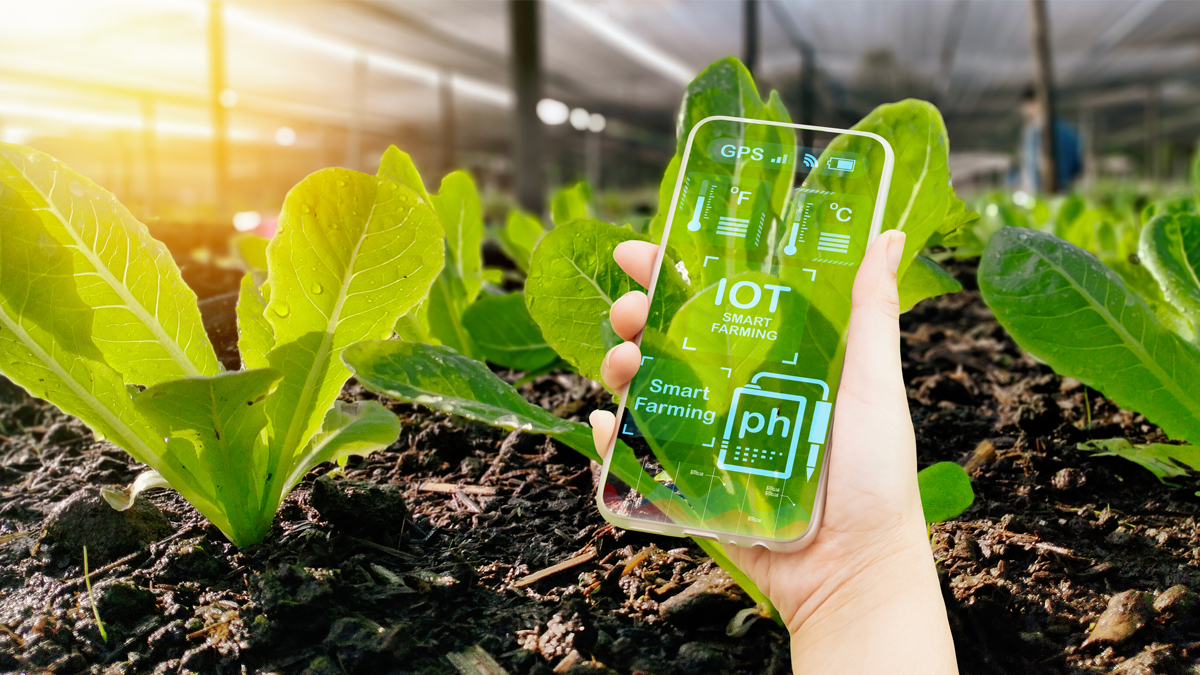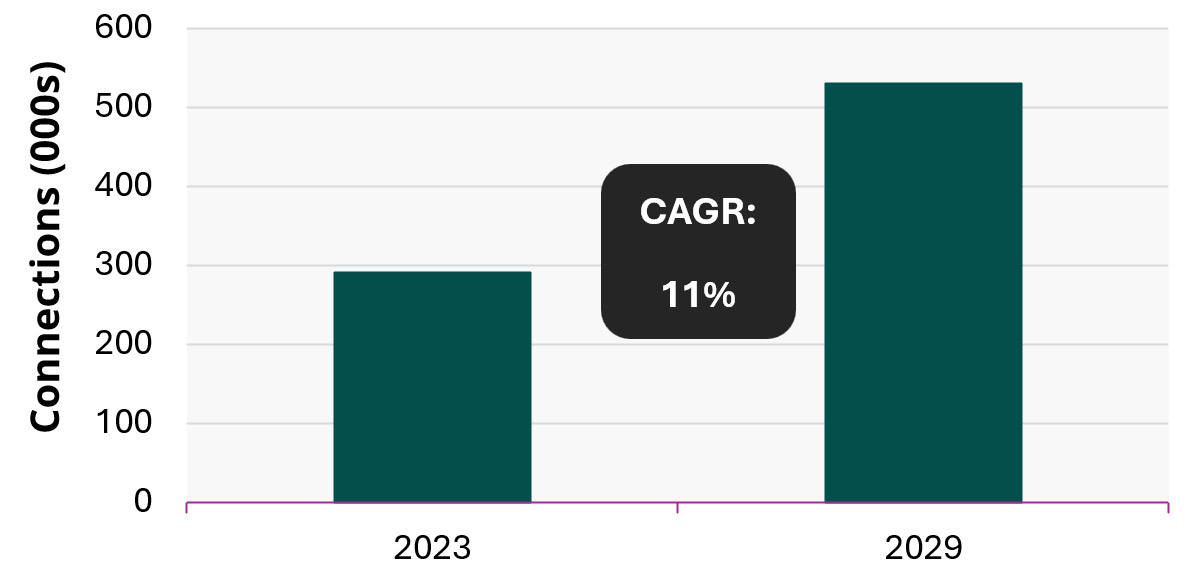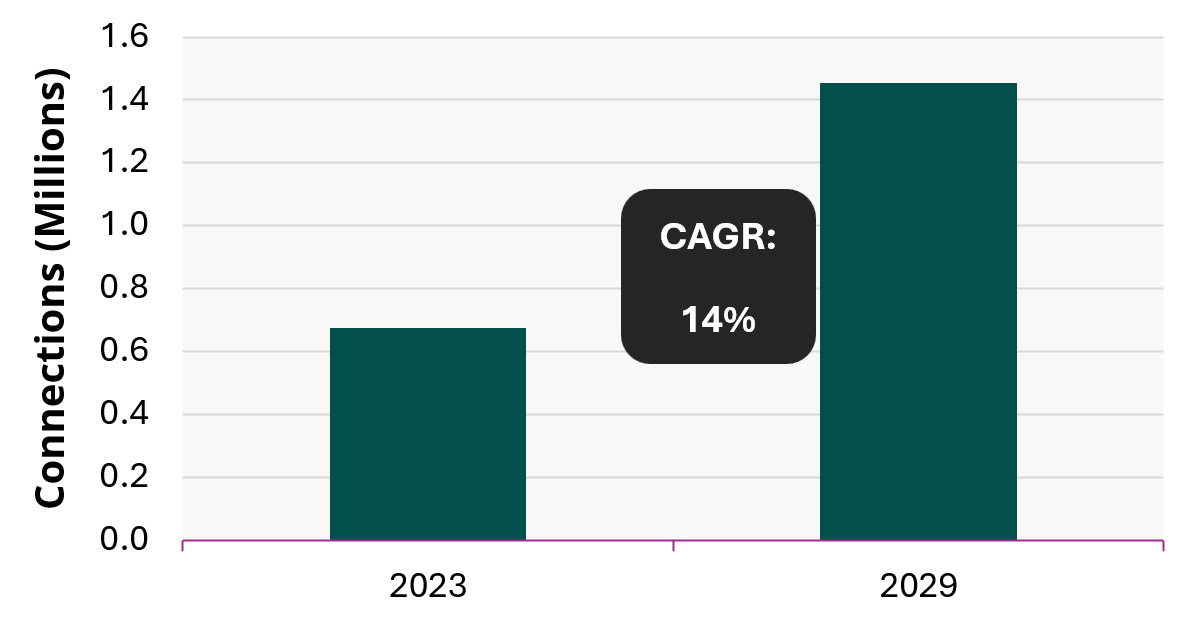
Satellite-enabled Internet of Things (IoT) technology is rapidly emerging as a valuable solution for Internet of Things (IoT) applications in the energy and agriculture markets. By offering remote connectivity, real-time data collection and advanced analytics, satellite IoT has been driving significant efficiencies and improvements in these sectors. In 2023, the satellite IoT market boasted an estimated 8.4 million connections, with a market size exceeding US$1.35 billion, highlighting its substantial growth and potential. (Link)
Emerging IoT Use Cases Leveraging Satellite Connectivity in the Energy Industry
Enhanced Remote Monitoring & Control
Remote monitoring and control is a significant challenge in the energy market, as energy assets are often located in remote “off-grid” areas, making the monitoring, management, and control of these assets challenging. Conventional methods, which involve manual inspections and on-site presence, are time-consuming, costly, and potentially hazardous for the operational crew.
Satellite IoT ensures continuous connectivity and real-time monitoring of remote energy assets. Sensors transmit data on equipment performance, allowing companies to monitor operations without on-site presence, take swift corrective actions, and reduce downtime. This reduces the need for manual inspections, saving costs and streamlining operations. For example, Globalstar (United States) and Ovinto (Belgium) have partnered with a major gas exporter to monitor 600 tank containers transporting hazardous gases worldwide to help enable uninterrupted key data flow.
Satellite-Enabled Predictive Maintenance
Predictive maintenance is another notable challenge in the energy industry, as preventing equipment failures before they occur is crucial for minimizing downtime and maintaining productivity. However, without continuous and real-time data, it is extremely difficult to predict when maintenance is needed.
Satellite IoT is essential for predictive maintenance in the energy industry, as it offers continuous remote monitoring and real-time data analysis to detect potential issues early. This allows maintenance teams to address problems before they escalate, extending asset operational periods and reducing unexpected breakdown costs. Globalstar (United States) and GlobalSat (United States) deployed an IoT solution to monitor renewable energy facilities in Latin America, using 23,000 devices to provide real-time data on equipment status, energy consumption, and theft prevention, which unlocked considerable efficiency optimizations.
Enhanced Grid Management with Satellite IoT
Grid management and energy distribution are also pressing concerns, as efficiently managing energy distribution and preventing blackouts requires real-time data on energy consumption and distribution. These data are often hard to obtain, especially in remote and off-grid locations.
Satellite IoT enhances grid management by delivering real-time information on energy consumption and distribution, essential for balancing supply and demand, and preventing blackouts. It also aids the integration of renewable energy sources by providing precise performance data. In 2020, CERFOX (Brazil) used ORBCOMM’s (United States) satellite IoT Smart Grid solution to maintain continuous energy provision during a cyclone, ensuring critical communications remained online, despite grid collapse.
Emerging IoT Use Cases Leveraging Satellite Connectivity in the Agriculture Industry
Improved Livestock Management
Livestock management is a key consideration, as monitoring the health, location, and behavior of livestock is crucial for disease prevention and optimal feeding practices. Manual monitoring of livestock is complex and time-consuming, and early warning signs of livestock issues are often missed.
Satellite IoT enhances livestock management by enabling comprehensive health monitoring and geofencing. Sensors attached to livestock can help track vital signs, activity, and location, helping to detect early illness and effective herd health management. Real-time tracking and virtual boundaries enabled by satellite IoT technology also help prevent straying and theft, optimizing grazing and boosting farm profitability. A recent example is the deployment of satellite IoT by Spacecom (United States) and AYECKA (Israel) at Omega Farms in South Africa, which provides real-time geofencing and asset tracking for cattle, improving farm management and allowing for quicker responses to incidents.
Enhanced Remote Farm Management
Farm management is also a chief concern, as managing large or remote farms presents logistical challenges in terms of monitoring and coordinating farming activities. The lack of connectivity in remote areas where the farms are located further hampers effective farm management and data collection.
Satellite IoT provides reliable connectivity in remote areas, enabling continuous data transmission and monitoring. With satellite IoT technology, farmers can remotely oversee activities and make informed decisions based on real-time data, improving management and productivity of large or remote farms. Farmbot Monitoring Solutions (Australia), Inmarsat (United Kingdom), and Pivotel’s (Australia) deployment of IoT-enabled water management solutions for Australian farmers is a great example. This deployment enables remotely activating machinery, cameras, gates, and various equipment on the farm. This IoT connectivity supported via satellite has unlocked millions in cost savings, reduced carbon footprints, and improved safety.
Precision Soil and Crop Monitoring with Satellite Technology
Soil and crop monitoring is crucial for agriculture activities, as farmers need accurate and timely information on soil moisture, temperature, nutrient levels, and crop health. The traditional methods for data collection on soil and crop conditions are labor-intensive, imprecise, and often fail to provide real-time insights.
Satellite IoT enables real-time monitoring of soil and crop conditions using IoT sensors in fields. These sensors gather data on soil moisture, temperature, and nutrients, providing farmers with accurate and timely information. This helps optimize irrigation, fertilization, and pest control, increasing yields and reducing waste. For example, Synnefa’s (Kenya) FarmShield device is used to collect agricultural parameters such as soil moisture and soil temperature, which the RockBLOCK 9602 satellite transceiver will backhaul and transmit using Iridium’s (United States) Short Burst Data (SBD) service. Farmers using Synnefa’s satellite IoT technology have reported saving water by over 50% and a reduction in fertilizer application rates by 41%.
Energy and Agriculture Outlook
The future of satellite IoT in energy and agriculture looks promising, with ongoing advancements and increasing adoption rates. Emerging technologies like Artificial Intelligence (AI) and Machine Learning (ML) are also set to enhance satellite IoT capabilities with advanced data analysis and predictive modeling.
 Figure 1: Satellite IoT in Energy (Source: ABI Research)
Figure 1: Satellite IoT in Energy (Source: ABI Research)
ABI Research has positive expectations for the growth of satellite IoT in the agriculture and energy industries. The number of satellite IoT connections in the smart grid sector is projected to grow from approximately 300,000 in 2023 to over 550,000 by 2029, representing a Compound Annual Growth Rate (CAGR) of 11%.
 Figure 2: Satellite IoT in Agriculture (Source: ABI Research)
Figure 2: Satellite IoT in Agriculture (Source: ABI Research)
In the agriculture sector, satellite IoT connections are expected to increase from roughly 700,000 in 2023 to over 1.4 million by 2029, with a CAGR of 14%.
Benefits of Enabling Digital Transformation with Satellite IoT Technology
Enhanced Operational Efficiency: The real-time data and insights provided by integrating satellite connectivity into IoT applications enables proactive maintenance and optimized operations, leading to increased efficiency and productivity in both the energy and agriculture industries.
Cost Savings: Satellite IoT applications could help reduce the need for manual inspections and maintenance trips, optimize resource usage, and minimize downtime. These improvements will result in significant cost savings for the agriculture and energy businesses.
Improved Safety and Compliance: Satellite IoT technology enhances safety and ensures regulatory compliance through continuous monitoring and predictive maintenance. This proactive approach helps prevent accidents and environmental damage, thereby maintaining high safety standards and adhering to regulations set out in the agricultural and energy environments.

About the Author
Victor Xu is an Industry Analyst at ABI Research. He contributes to a diverse range of research projects, exploring technological domains such as mobile network infrastructure, 5G technologies, wireless networks, the Internet of Things (IoT), Satellite Communications (SatCom), and key technological developments across the Southeast Asian region.
